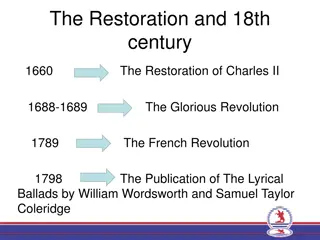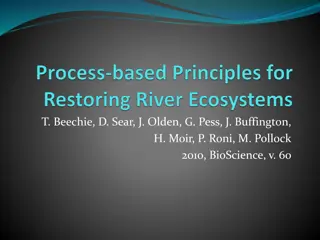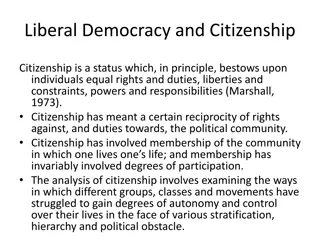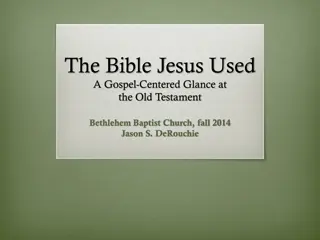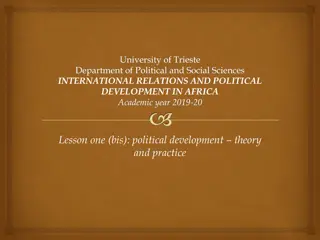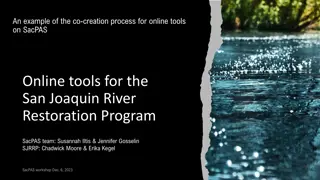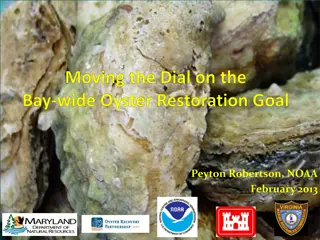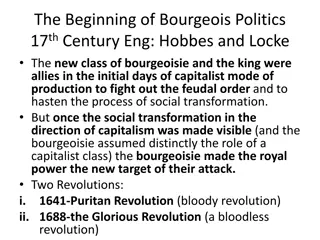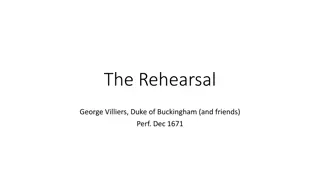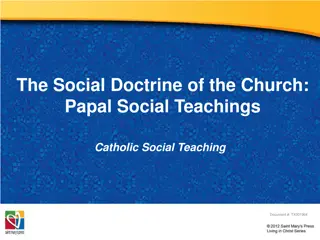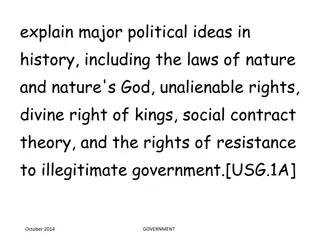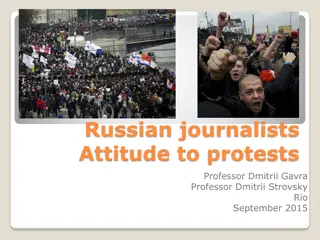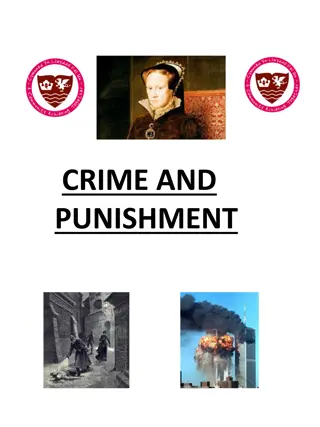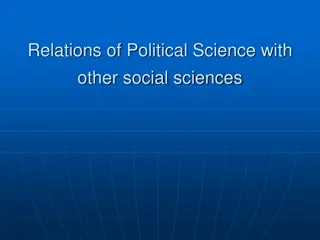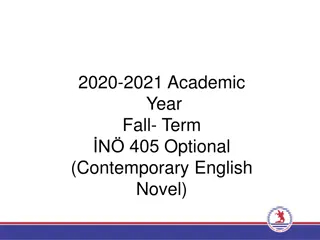England in the Restoration and Eighteenth Century: Political Evolution and Social Transition
Following years of civil wars and revolution, England saw significant political shifts from the Restoration period in the 1660s to the Eighteenth Century. The monarchy was restored, leading to the emergence of Whig and Tory political factions, battles for religious dominance, and the growth of British power on a global scale. The era was marked by the reigns of monarchs like James II and the three Georges, each facing unique challenges and shaping England's path towards prosperity and colonial expansion.
Download Presentation

Please find below an Image/Link to download the presentation.
The content on the website is provided AS IS for your information and personal use only. It may not be sold, licensed, or shared on other websites without obtaining consent from the author. Download presentation by click this link. If you encounter any issues during the download, it is possible that the publisher has removed the file from their server.
E N D
Presentation Transcript
The Restoration and the Eighteenth Century 1660-1785 Political Background
Charles Stuart returned in 1660 to England which was a nation divided against itself by twenty years of civil wars and revolution. Within two decades of the king s return, the Royal navy had defeated the navy of Holland and in a series of wars fought between 1689 and 1763 against France, the British acquired dominions that stretched around the world, from Canada in the west to India in the east.
The restoration of the monarchy meant, inevitably, the restoration of the established church. The bishops and Anglican clergy felt anything but Christian charity toward their Dissenting brothers. In 1662 Parliament re-imposed the Book of Common Prayer on all ministers and congregations. The two adversaries of the Anglican church, Protestant Dissenters and Roman Catholics, were alike excluded from public life.
Two important political parties emerged: Whig and Tory. Tory is the party of the court which supported the king in 1681. Whig is the party of the king s opponents. James II came to the throne in 1685, determined to advance the cause of the Roman church in England, an atmosphere of crisis rapidly developed.
On December 11, James fled to France when the Dutchman William of Orange arrived to England at the head of a small armed force. William was a prominent leader of Protestantism and his wife Mary was James s Protestant daughter. A more tolerant era was opening specially with the Dissenters.
The three Georges who occupied the throne during the rest of the century presided over a nation that grew increasingly prosperous through war, trade, and the beginning of industrialism George I (reigned 1714-27) and George II (reigned 1727- 60) spoke broken English and had little interest in the affairs of the country. The long reign of George III (1760-1820) was dominated by two great concerns: the emergence of Britain as a colonial power and the cry for a new social order based on liberty and radical reform.
The Intellectual Background As the 18thcentury was the age of stability, order, peace and tolerance, people became more and more convinced that civilized way of living had depended on law, order and restraint. There was the belief in the supremacy of reason and common sense. The spirit of reason was propagated by such thinkers as Hobbes and Locke who emphasized rational thinking.
The Literature of this period is chiefly a literature of wit, concerned with civilization and social relationships, and consequently, it is critical and in some degree moral or satiric. Nevertheless, a body of writing that reached a wider audience was coming into being. The reading public expanded steadily throughout the eighteenth century, and its new recruits were upper-class women and the increasingly numerous rich and leisured people of both sexes in the trading middle class. The popular press flourished, producing a succession of newspapers and literary periodicals.
The Novel Before the 18thcentury there were separate attempts to write novels, the most noticeable were Sir Philip Sidney s The Countess of Pembroke Arcadia and Bunyan s The Pilgrim s Progress. The 18thcentury established novel as a form of literature.
The beginning came with Daniel Defoe (1660- 1731) Defoe s great works are the life and adventures of Robinson Crusoe (1719), Captain Singleton (1720), Moll Flanders (1722), Colonel Jacque (1722), A Journal of the Plague Year (1722), and Roxana (1724).
The next development in the novel, and perhaps the most prominent, came with Samuel Richardson (1689-1761) who might be called the father of the English novel. He wrote Pamela or Virtue Rewarded (1740), Clarissa, and then Sir Charles Grandison. In fact, Richardson introduced the psychological novel.
Henry Fielding (1707-1745)is a novelist of a different mettle. He wrote The Adventures of Joseph Andrews (1740) and The History of Tom Jones (1749)
The Texts Compulsory texts Daniel Defoe, Robinson Crusoe . Cairo: Anglo Bookshop. http://www.fullbooks.com/Robinson-Crusoe1.html Henry Fielding, Joseph Andrews. Cairo: Anglo Bookshop. Additional texts Ian Watt, The Rise of the Novel. London: Penguin, 1979. http://books.google.com.eg/books?id=yS_w4NyR9IsC&pg=PA6&source=gbs_toc_r &cad=4#v=onepage&q&f=false Michael Mckeon, Theory of The Novel: A Historical approach. Baltimore: The Johns Hopkins University Press, 2000. books.google.com.eg/books?isbn=080186397X Michael Mckeon, The Origins of The English Novel 1600-1700. Baltimore: The Johns Hopkins University Press, 2002. books.google.com.eg/books?isbn=0801869595
Class Assessment Mid term-exam 20 Final exam 40 Assignment One 15 (Presentation 5) Assignment Two 15 (Presentation 5)



